
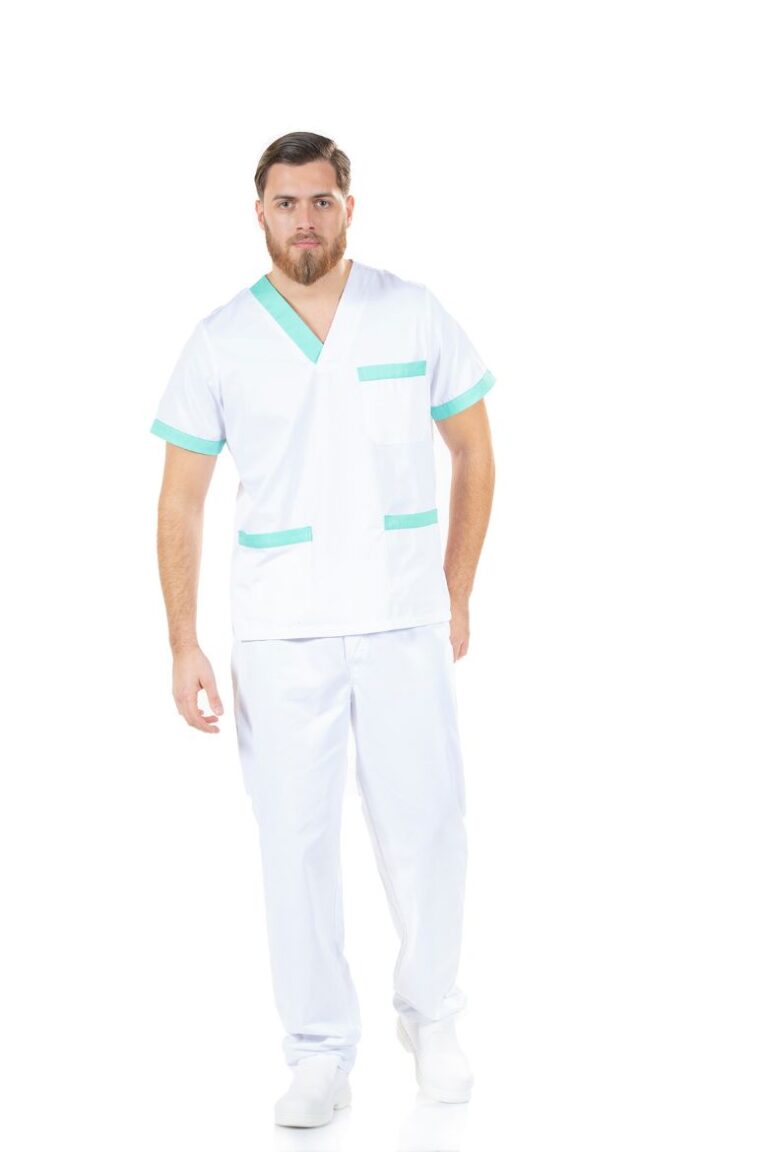
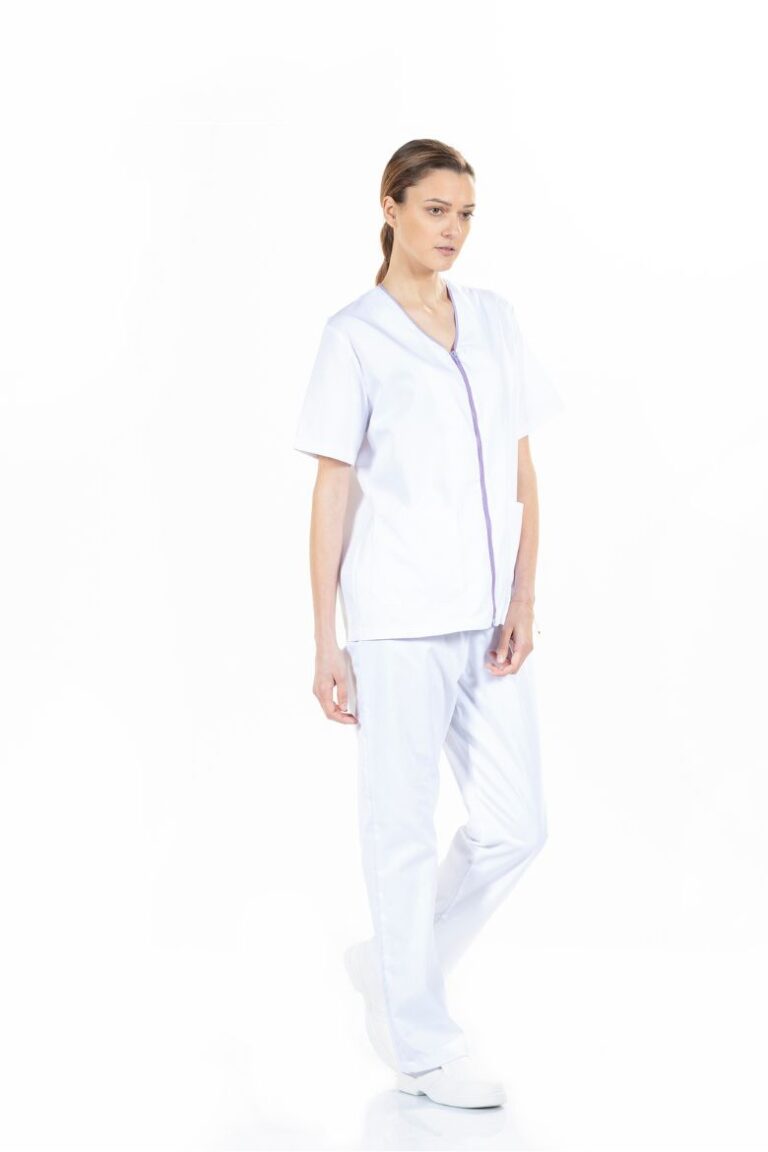
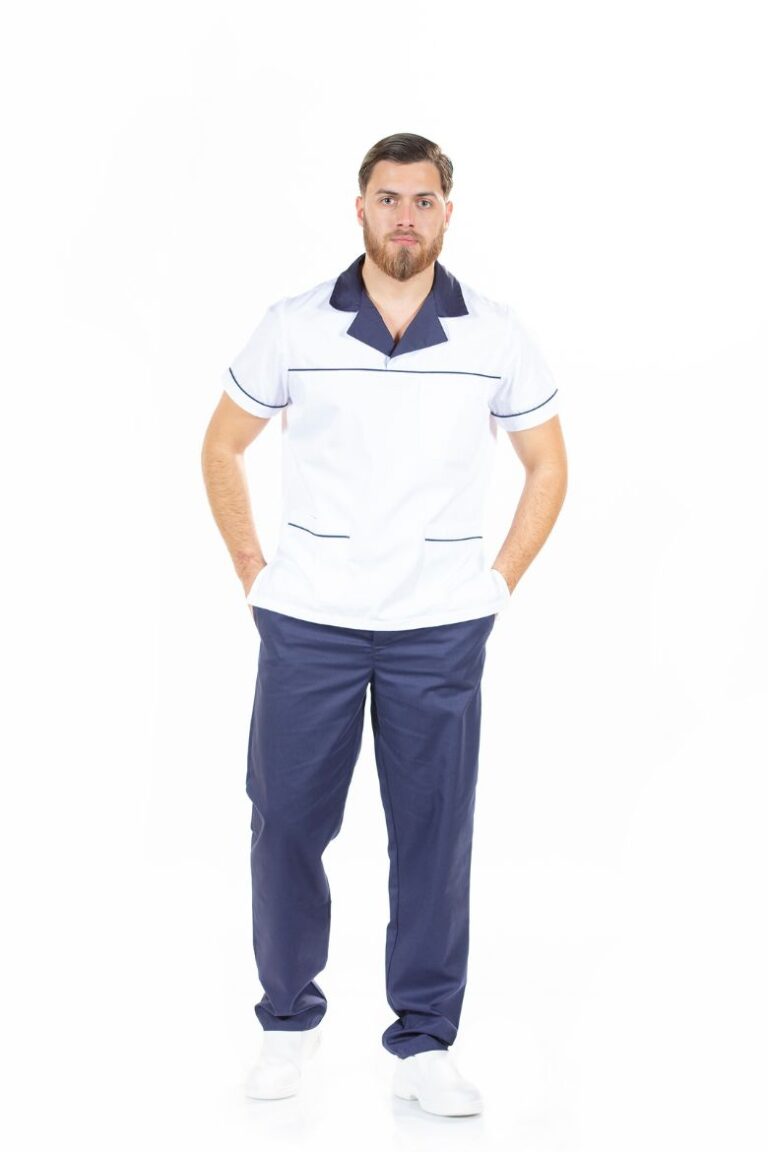
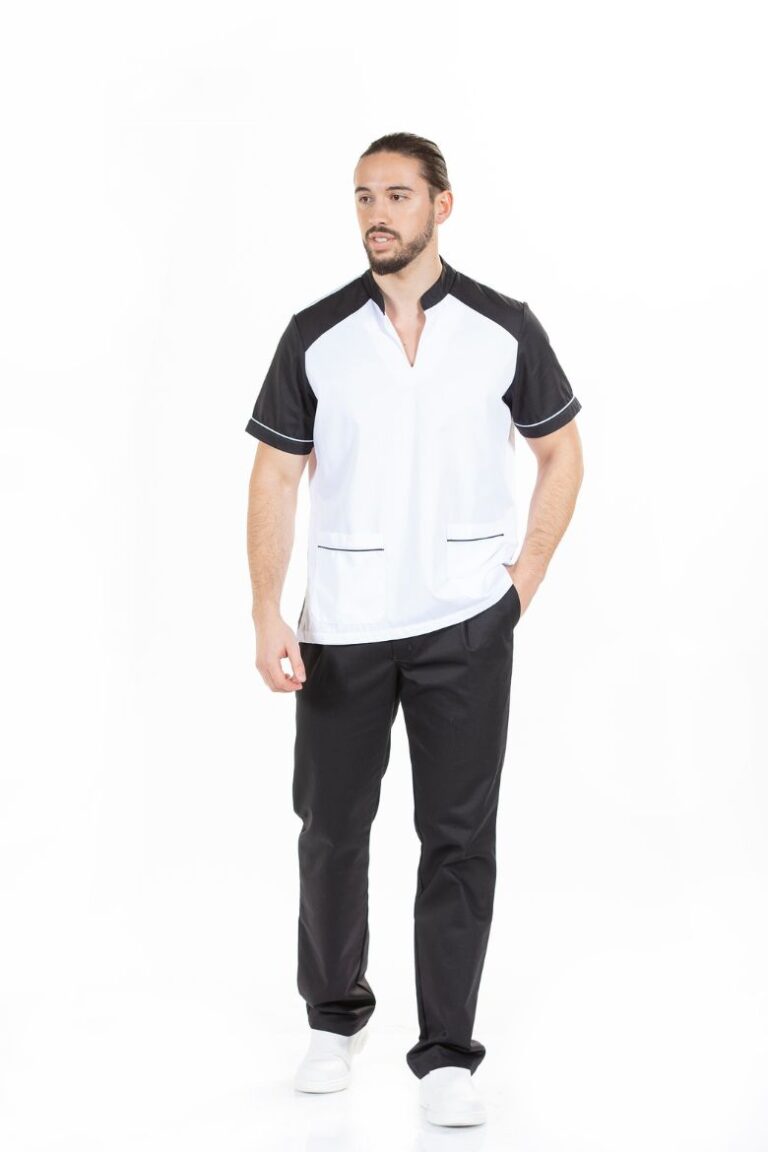
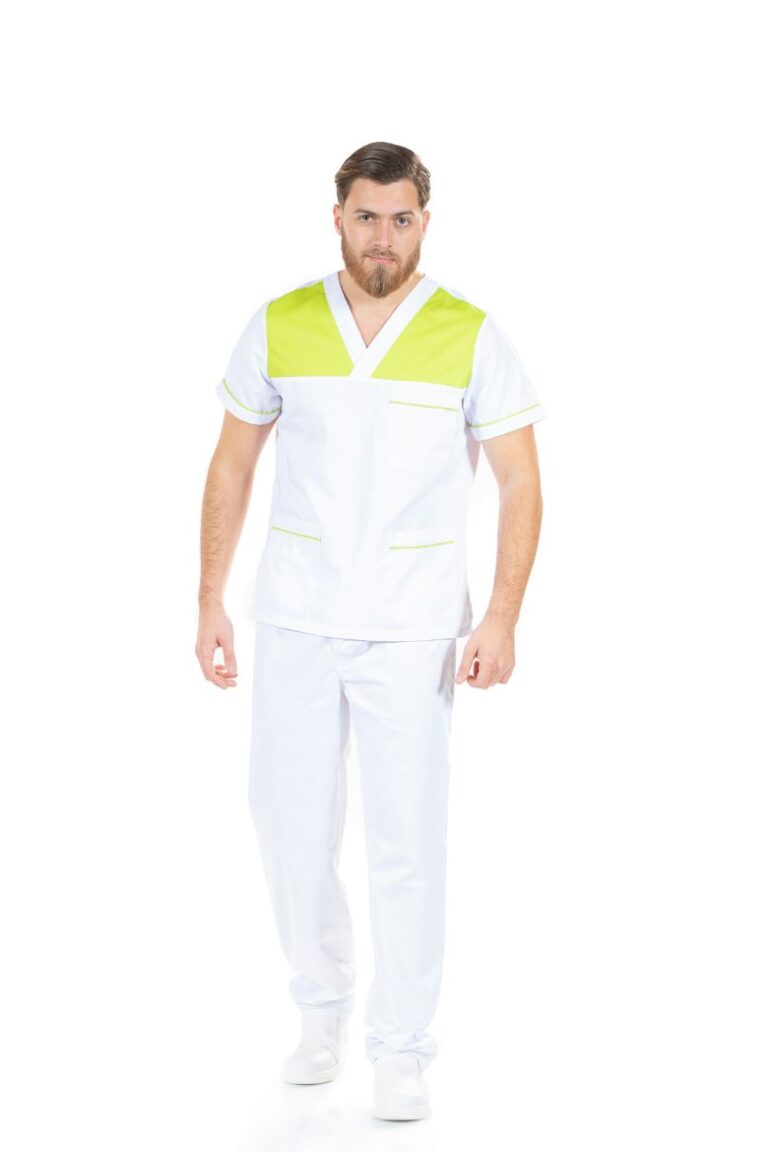
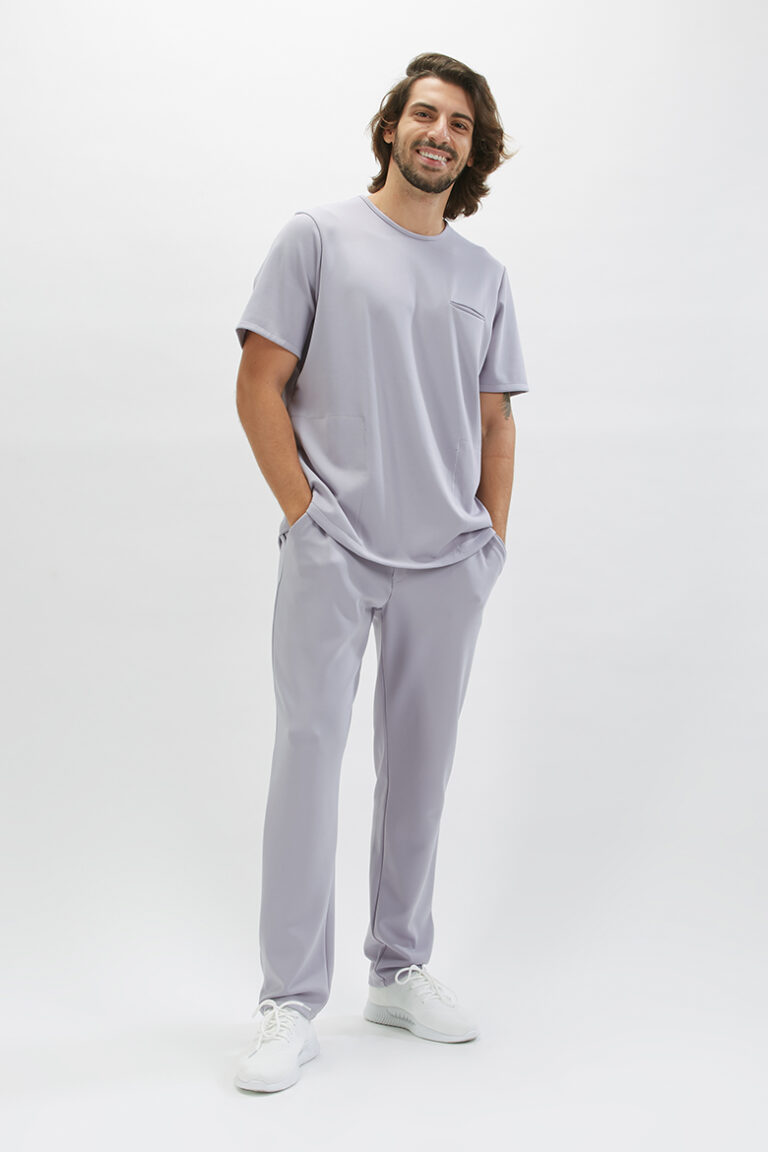
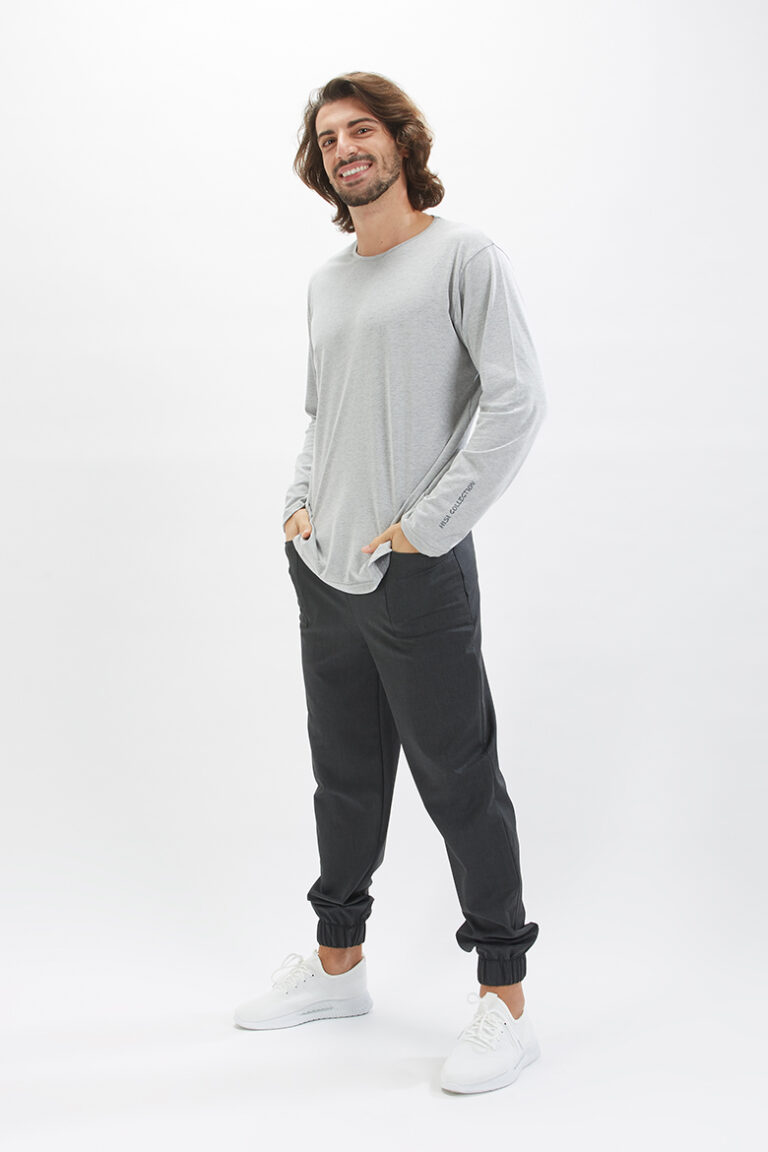
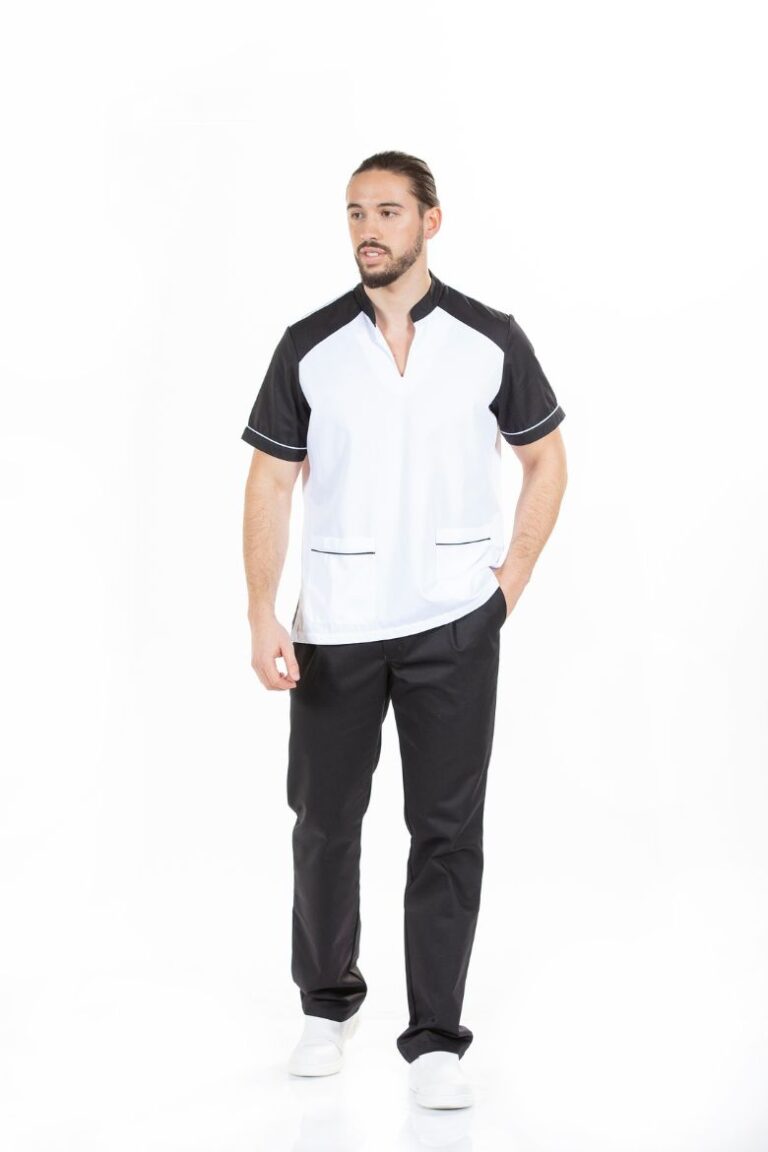


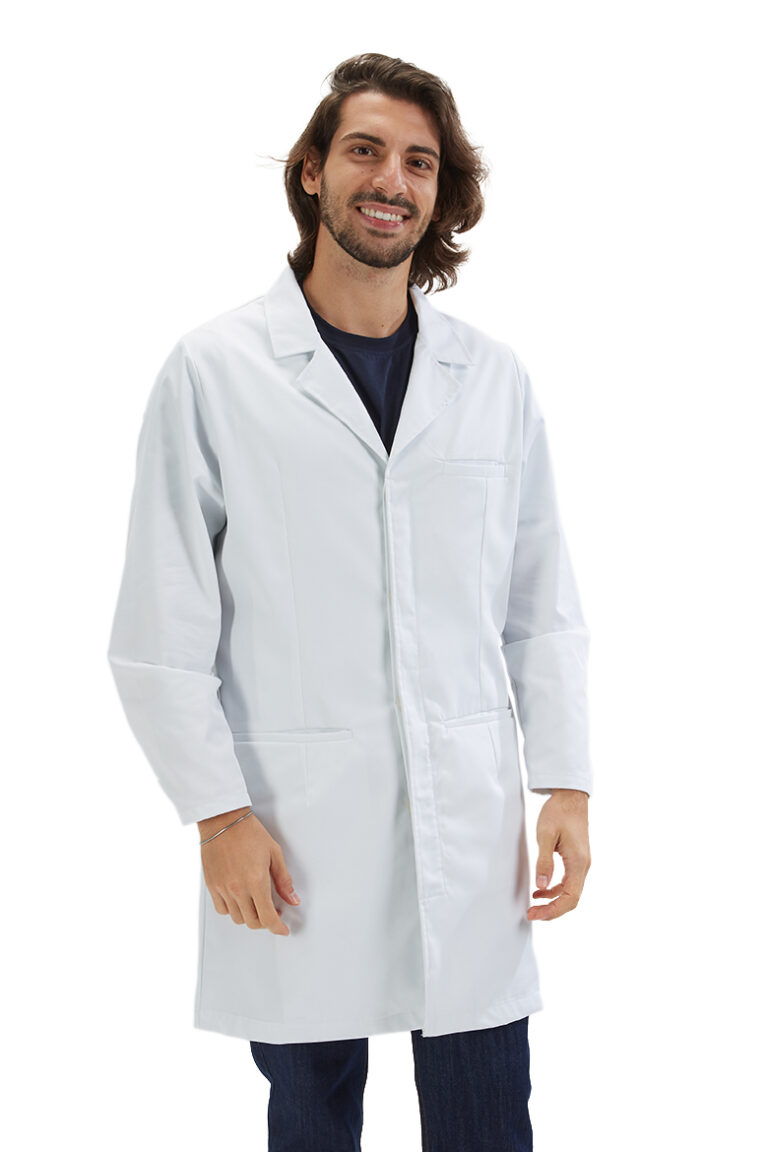
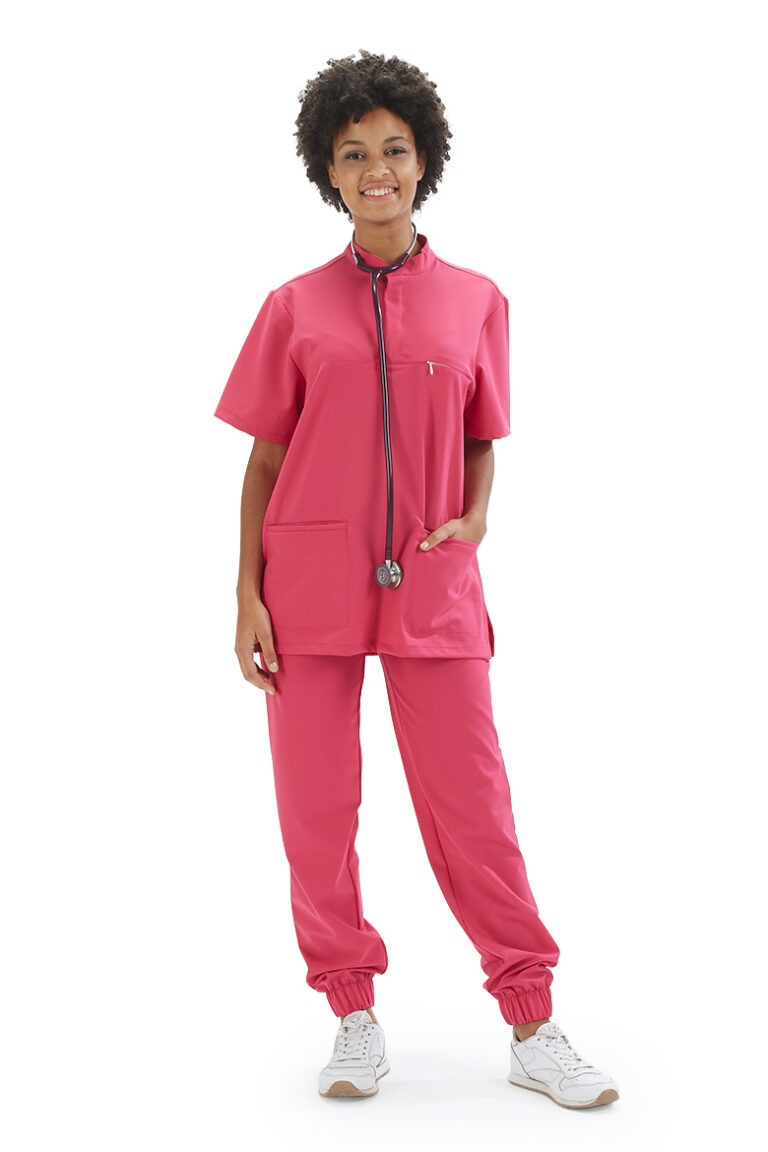
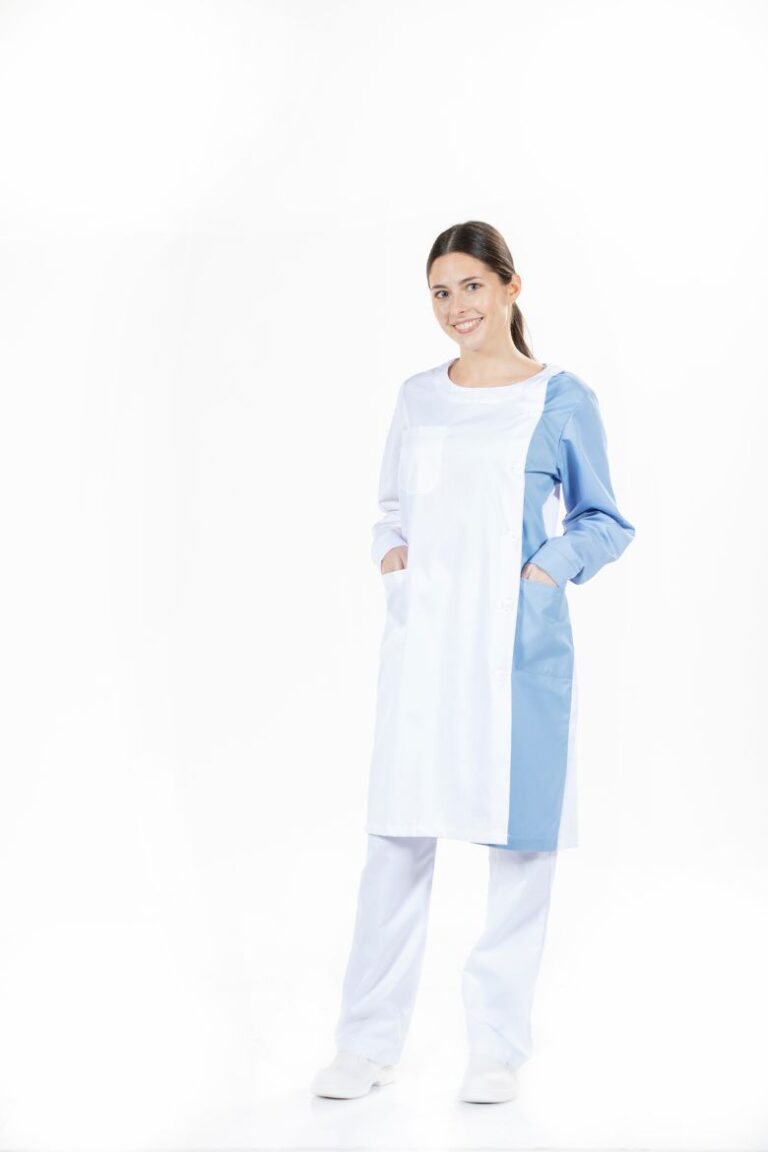
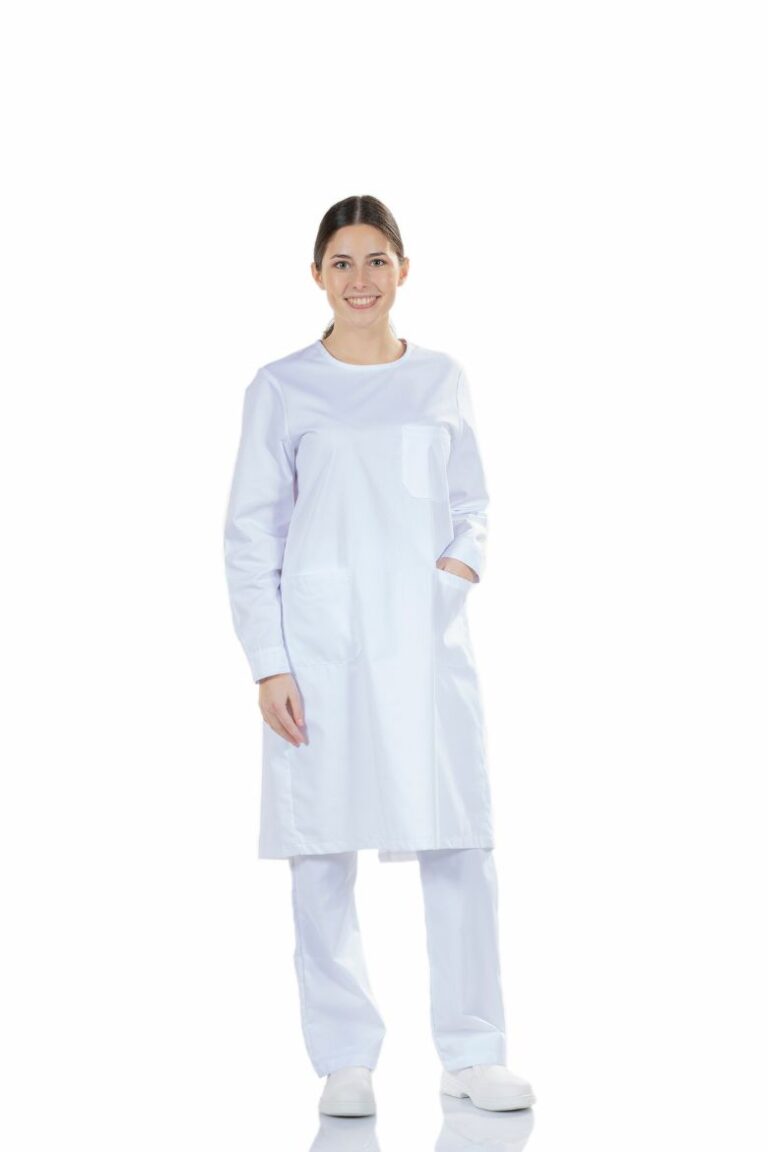
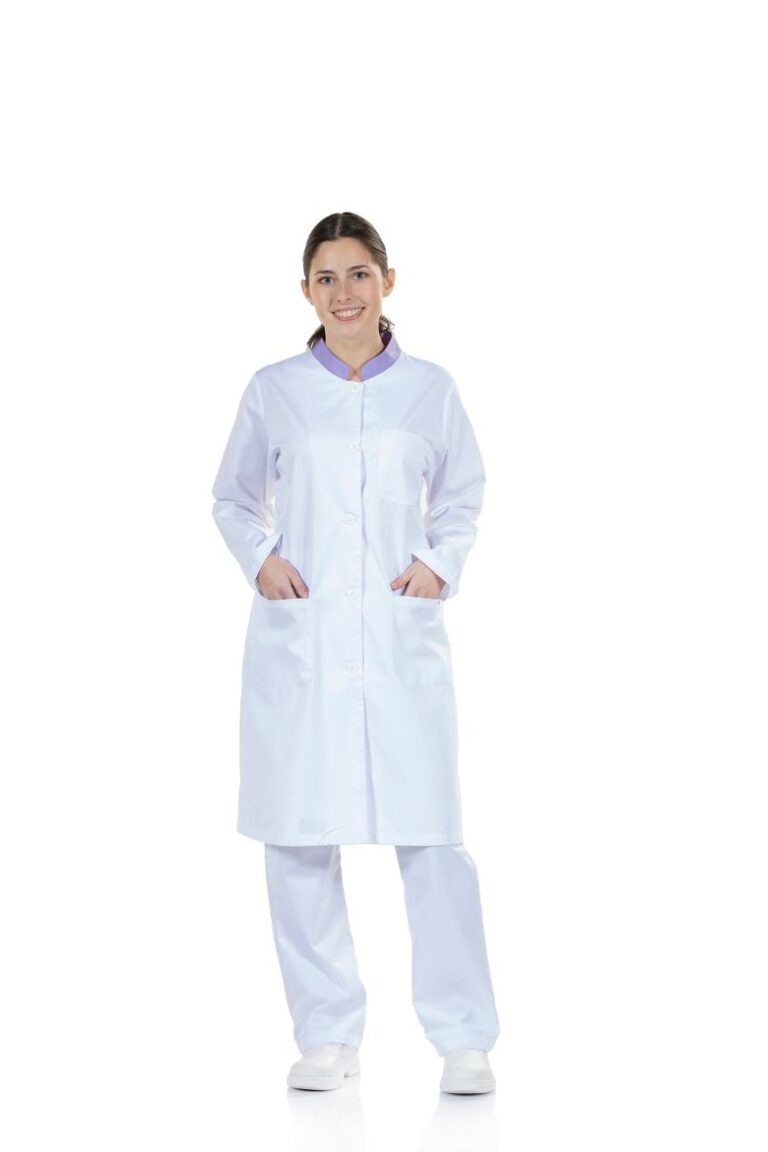
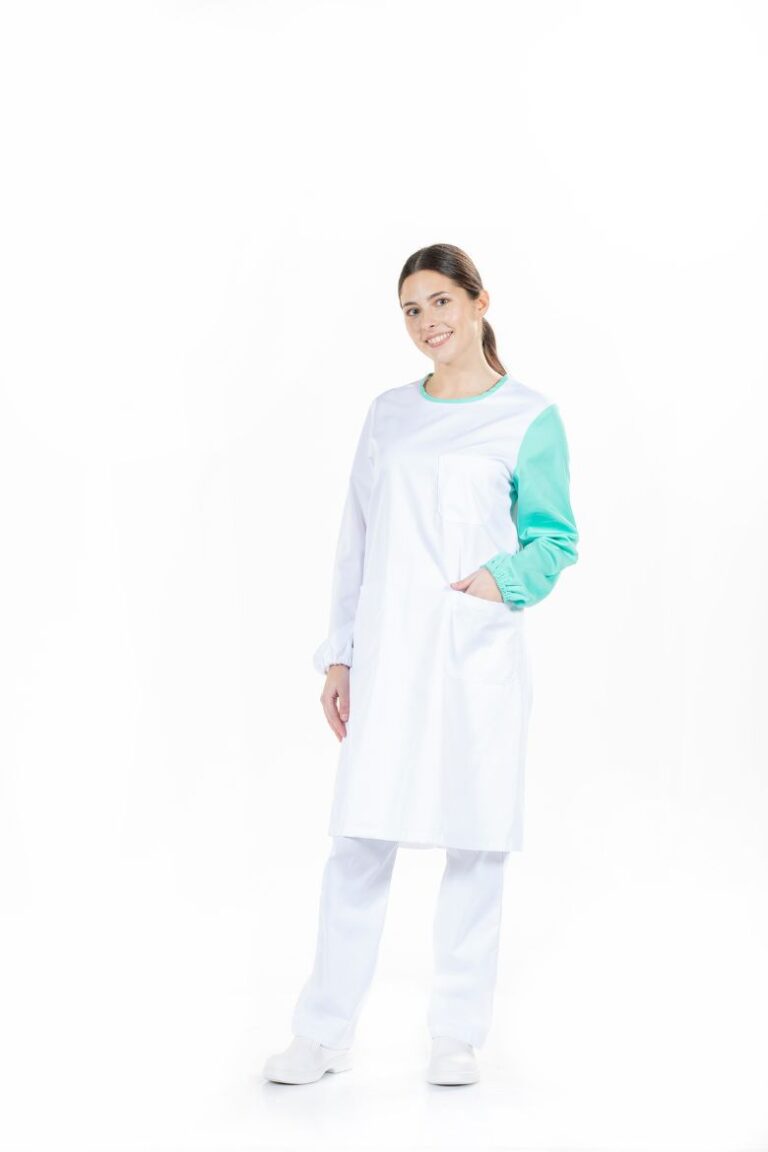
Products with visible prices are those that can be purchased immediately, online, without requiring minimum purchase quantities. This means you can explore our variety of options and purchase exactly what you need, with complete transparency regarding costs and the Professional Apparel model. On the other hand, products without a listed price function as a portfolio of possibilities. These items are highly customizable and can be tailored to each customer's individual specifications. To ensure quality and meet expectations, these products have a minimum order quantity and are subject to a custom quote process.
There are several benefits to wearing a healthcare uniform, both for professionals and for the patients and healthcare institution as a whole. Key advantages include: • Safety: Healthcare uniforms are designed to offer protection and safety to professionals. Features may include fitted cuffs to prevent fabric from coming loose, liquid-resistant and stain-resistant materials, and special pockets for medical instruments. These features help reduce the risk of work-related accidents and injuries. • Hygiene: Most healthcare uniforms are made from materials that can be easily washed and disinfected. This is crucial in hospital environments where hygiene is key to preventing infection spread. Uniforms also cover most of the body, reducing skin exposure to bacteria and other microorganisms. • Comfort: Healthcare uniforms are designed for comfort and allow professionals to move freely. This is important for performing tasks efficiently without discomfort. • Identification: Standardized uniforms help identify healthcare professionals and their roles. This ensures patients know who is caring for them and facilitates communication within the healthcare team. • Professional Image: Healthcare uniforms help create a professional image for both the individuals and the institution. This can instill confidence and credibility with patients and their families, which is crucial for the overall patient experience. • Cost-Efficiency: Using healthcare uniforms can be cost-effective for professionals, as they do not need to maintain specific work clothing. Additionally, uniforms are generally durable and long-lasting compared to regular clothes.
Standardization of healthcare uniforms is common in hospitals and other healthcare institutions. Using standardized uniforms helps in identifying healthcare professionals as each color or style may be associated with a specific role or hierarchy. For example, doctors might wear white coats, while nurses wear uniforms in a specific color or style. This helps patients and their families identify who is caring for them and whom to approach for questions or assistance. Additionally, standardization helps create a professional and organized environment. It can also include badges or emblems indicating the institution or the professional's specialty, which is useful for identifying those working in specialized areas such as oncology or surgery.
Healthcare uniforms are essential for professionals in the field. They not only standardize employee appearance but have also become crucial for ensuring safety, comfort, and hygiene during work tasks. Below, we will discuss the main components of healthcare uniforms and the advantages professionals gain by wearing them appropriately.
Components of Healthcare Uniforms
Healthcare uniforms consist of various elements that vary depending on the role and area of expertise of the professional. Some of the most common pieces include:
• Lab Coat: A long garment that covers the torso and arms, typically white and made from lightweight and comfortable fabrics such as cotton. It is used to protect the professional’s clothing and prevent contamination of patients and hospital environments.
• Medical Pants: Made from lightweight and durable fabrics, these pants should have a comfortable fit to allow mobility during work.
• Cap: A piece that covers the entire hair and is used to prevent hair from falling into the hospital environment. It may also serve as protection in areas with aerosol contamination risks.
• Shoes: Healthcare shoes should be comfortable and closed to protect the feet from accidents and contamination. Some models feature non-slip soles for safety on wet or slippery surfaces.
• Protective Mask: Used to protect the professional from possible aerosol contamination and to prevent patient contamination during surgical procedures.
Advantages of Wearing Proper Healthcare Uniforms
Wearing appropriate healthcare uniforms offers several benefits for professionals, including:
• Safety: Healthcare uniforms are made from fabrics and materials designed to ensure the professional’s safety during work. The standardization of uniforms also facilitates professional identification and helps prevent accidents in hospital environments.
• Hygiene: Healthcare uniforms help prevent contamination of patients and the hospital environment. It is important for these garments to be properly washed and sanitized to eliminate bacteria and other microorganisms.
• Comfort: Healthcare uniforms are crafted from lightweight and comfortable fabrics, allowing professionals to move freely during work. This is especially important for roles requiring frequent movement, such as nurses and nursing technicians.
• Standardization: Uniform standardization helps ensure professional identification and conveys an organized and professional image within the hospital environment.
• Professional Image: Wearing appropriate healthcare uniforms helps convey a professional and trustworthy image to patients and their families. This is crucial in healthcare settings, where trust and credibility are essential for successful treatment and patient retention.
• Cost-Efficiency: Using healthcare uniforms can save professionals from needing to maintain specific work attire. Additionally, uniforms are generally durable and resistant, offering a longer lifespan compared to conventional clothing.
• Identification: Healthcare uniforms allow patients to easily identify the professional responsible for their care, helping to build trust and security between patients and staff.
Healthcare uniforms are vital for ensuring safety, comfort, and hygiene in the workplace, as well as for presenting a professional and trustworthy image to patients and their families. It is important that uniforms are made from suitable materials and are frequently washed and sanitized to ensure the elimination of bacteria and other microorganisms. Furthermore, uniform standardization helps with professional identification and prevents accidents in hospital settings.
Fardamento à sua medida.
Descubra as nossas
soluções.
Fardamento à sua medida.
Descubra as nossas
soluções.
To subscribe, please enter your e-mail address and click on “Subscribe”.
You can stop receiving our communications by clicking on the link in the footer of any of our newsletters.
Para efetuar a sua subscrição, por favor insira o seu e-mail e clique em “Subscrever”.
Poderá parar de receber as nossas comunicações, ao clicar no link para o efeito encontrado nos rodapés de qualquer uma das nossas Newsletters.
UNIFARDAS® supports Espaço T, which is an inclusive organisation, of all and for all, and our common goal is to increase employment opportunities for young people with special needs and/or who, for some reason, have been excluded from the labour market.
We work hard to provide safe working conditions by going beyond the imposed and mandatory minimums.
We support, nurture and offer continuous training programmes aimed at improving skills.
At UNIFARDAS® we keep up to date with the latest technologies and innovations that can optimise our production process making it more efficient and close to zero waste.
UNIFARDAS® is a partner of Espaço T, an inclusive organisation, of all and for all, with the common goal of increasing employment opportunities for young people with special needs and/or who, for some reason, have been excluded from the labour market. In this organisation, immigrants will also find a support network in finding work and housing.
In addition to the sustainable path we have been taking throughout our production and supply chain, UNIFARDAS® participates, supports and organises a beach clean-up every year after the bathing season, in partnership with World Clean-up Day. We are also partners of Seaqual, an entity that, together with some other partners, promotes the collection of ocean waste and its transformation into upcycled marine plastic that will then be used in the production of fabric and other sustainable products.
In addition to the sustainable path we have been taking throughout our production and supply chain, UNIFARDAS® participates, supports and organises a beach clean-up every year after the bathing season, in partnership with World Clean-up Day. We are also partners of Seaqual, an entity that, together with some other partners, promotes the collection of ocean waste and its transformation into upcycled marine plastic that will then be used in the production of fabric and other sustainable products.